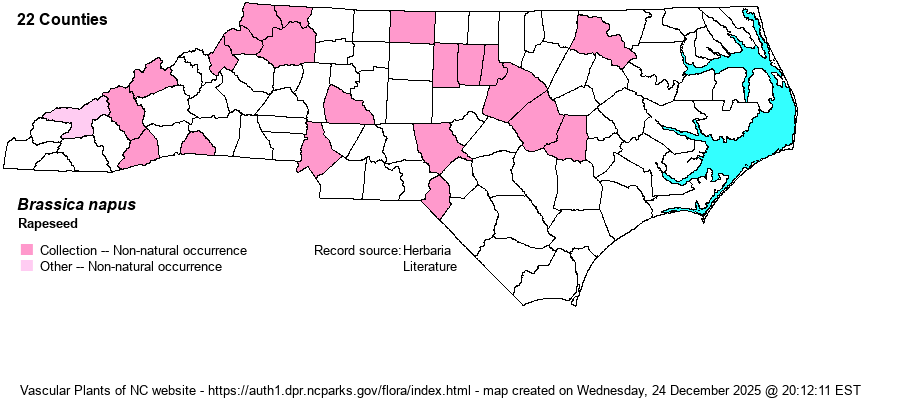| Author | L. | |
| Distribution | Mostly Piedmont and Mountains; rare in the Sandhills and Coastal Plain.
Native of Eurasia and Africa; in N.A. throughout most of Canada; in the U.S. nearly throughout but largely absent from the Central Plains and the Rocky Mountains. | |
| Abundance | Uncommon, except rare in the Coastal Plain and Sandhills. | |
| Habitat | Roadsides, cropfields, fallow fields, disturbed soils, waste areas. | |
| Phenology | Flowering and fruiting May-July. | |
| Identification | Rapeseed is an annual or biennial from a taproot; the stems are glaucescent or glaucous, and glabrous to coarsely hairy. The basal leaves are divided into paired lobes, but sometimes merely sinuous-lobed. The stem leaves are sessile and clasp the stem around each side (sometimes the 2 lobes touch or overlap). The flowers are yellow. The fruits are twice as wide as those of B. juncea, and held in an ascending to rather horizontal position. B. rapa is very similar, but the plant is green vs. glaucescent in B. napus, and the petals are shorter. | |
| Taxonomic Comments | | |
| Other Common Name(s) | Canola, Rutabaga, Rape | |
| State Rank | SE | |
| Global Rank | GNR | |
| State Status | | |
| US Status | | |
| USACE-agcp | | |
| USACE-emp | | |

